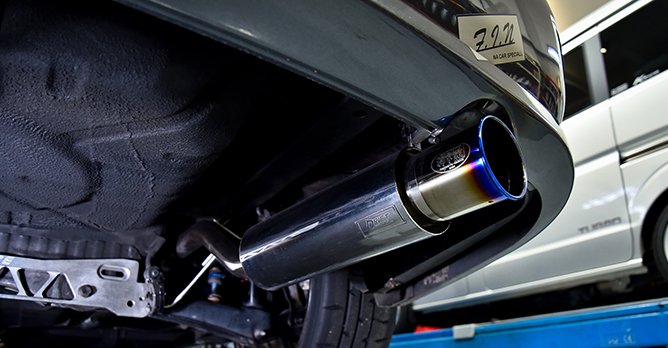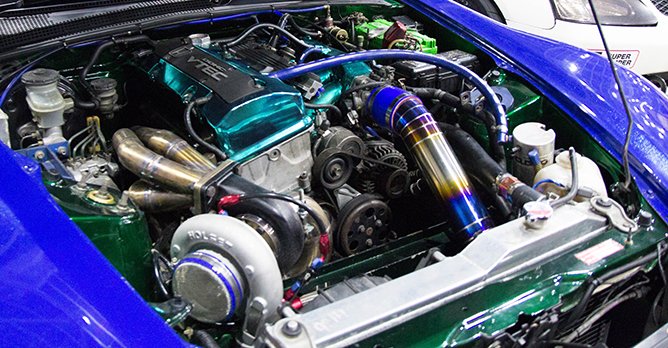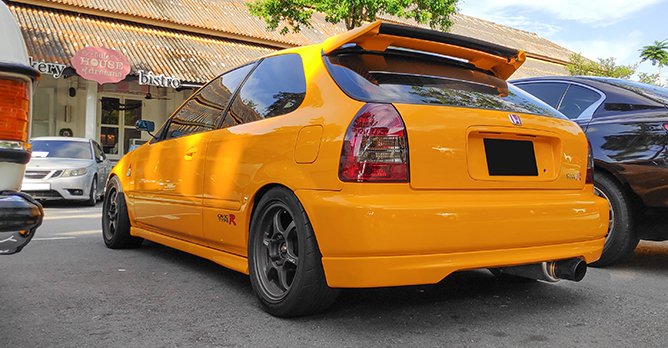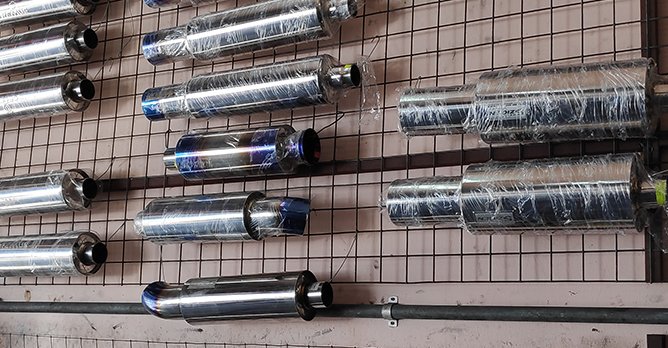Are Singapore's car exhaust modification regulations in urgent need of a revamp?
12 May 2021|32,845 views
A workshop owner was recently charged for performing illegal exhaust modifications, and it quickly made the news. Judging from the overwhelming reactions condemning the practice, it is clear that such vehicle modifications have provoked the ire of the general public. Many netizens also expressed their wish to see more stringent enforcement on errant car owners and workshops.
And it's simple to understand why - the loud noise from modified exhaust systems disturbs the peace, especially in the middle of the night. The authorities just announced the increase of fine for illegal modifications, from $500 to $1,000, starting from 1 July 2021. But, are harsher punishments and rigorous enforcement really the way to quieter roads?
Why do drivers want to meddle with their exhausts?

The biggest issue with this is the emission characteristics which affects the environment, as well as the noise created that can be a huge public nuisance. That is why Singapore, along with other countries, has regulations in place to keep it under control.
According to the Senior Minister of State for Transport Amy Khor, an average of 610 notices of offences was issued to owners of illegally modified vehicles in the past two years. However, despite the hefty fines and inconvenience that offending drivers and workshops are slapped with, the practice of illegal exhaust modification is far from eradicated. Is it due to pure stubbornness or is there a fundamental flaw within the regulations here?
There are LTA approved exhaust mods right?
From the perspective of environmentalists, and those who dislike noisy exhausts, the perfect scenario will be to outlaw all exhaust mods, along with a heavy handed enforcement approach - but we all know that wouldn't work. Just look at how the Prohibition era in the United States turned out.
That's probably why the LTA has a set of regulations for exhaust modifications, including legal, approved exhaust systems. But the rigid and outdated approach of these regulations might be a bigger issue than the errant drivers who flout them. Here are a few areas of concern and why the regulations need to be updated.
Limited availability of legal exhausts
The only way to have a legal, non-factory exhaust system, is to go for one that has been approved by the LTA. To do so, not only does the exhaust have to be certified by the manufacturer to suit an exact car model, both the car and exhaust system has to be sent to an LTA or NEA recognised laboratory (understood to be located overseas) to be tested to comply with noise and emission standards for every batch.
These tests are hence a costly and complicated process that only makes sense for distributors willing to commit to a large minimal quantity. Thus, less popular car models might not have any legal option at all, while the batch approval process also limits the availability - the same, approved model of exhaust from an alternate source that doesn't fall within the approved batch will be illegal to use.
Strict 'no-tampering' stand on exhaust systems

While the intent is to deter illegal modifications, it also outlaws the repairing and refurbishment of a worn or damaged exhaust system.
The insulating materials within the exhaust, as well as the catalytic converter can wear out over time, resulting in increased noise and emissions. If the replacement of affected parts by means of cutting and welding is allowed, it will be easier and cheaper for car owners to keep their cars' exhaust clean and quiet.
Adopting a flexible result-oriented approach should be the way
Emissions and noise are the main concerns revolving exhaust modifications, so regulations should be crafted around these end goals.
Regulate based on emissions and sound level
Instead of the rigid testing and approval processes, the legality of an exhaust system should be pegged to the resulting emission and sound level. Set a reasonable sound level and emissions threshold - presumably that of a sporty production car to give some room for personalisation and exploration with exhaust systems, and enforce it at every periodical inspection.
Ensure the competency of inspection centres
With modern testing equipments, vehicle inspection centres here are able to test for Carbon Monoxide as well as Hydrocarbons emissions along with sound level for exhaust systems. As long as the equipment are properly maintained and calibrated, the authorities will be able to enforce these regulations with ease, without the need to involve professional laboratories.
Allow customisation of exhaust systems
By allowing the customisation of exhaust systems, car owners will have more options to personalise their cars - as long as the resulting emission and sound level is within the acceptable thresholds. This can be achieved with high-flow catalytic converters, experimenting with different exhaust piping design (length and diameter), resonator quantity and placement.
This is will not only placate car owners, but also boost the local automotive industry - exhaust specialist shops can now put their skills to use, offering the refurbishment and customisation of exhaust systems specifically to suit the local regulations. Even the most obscure car model can now have a legal customised exhaust system, and car owners will now have even less reasons to go for an illegal exhaust system.
Stop seeking the easy way out
The authorities have a tendency to turn up the heat by increasing the penalties on errant drivers. While it is easy to implement and, likely to have an effective short term effect, it doesn't solve the root of the issue.
By revamping and introducing some flexibility to the system, car enthusiasts will have a certain degree of freedom to pursue modifications without breaking the law. Eventually there will be no need for illegal modifications - like how there's no need for Moonshine after the Prohibition era.
A workshop owner was recently charged for performing illegal exhaust modifications, and it quickly made the news. Judging from the overwhelming reactions condemning the practice, it is clear that such vehicle modifications have provoked the ire of the general public. Many netizens also expressed their wish to see more stringent enforcement on errant car owners and workshops.
And it's simple to understand why - the loud noise from modified exhaust systems disturbs the peace, especially in the middle of the night. The authorities just announced the increase of fine for illegal modifications, from $500 to $1,000, starting from 1 July 2021. But, are harsher punishments and rigorous enforcement really the way to quieter roads?
Why do drivers want to meddle with their exhausts?

The biggest issue with this is the emission characteristics which affects the environment, as well as the noise created that can be a huge public nuisance. That is why Singapore, along with other countries, has regulations in place to keep it under control.
According to the Senior Minister of State for Transport Amy Khor, an average of 610 notices of offences was issued to owners of illegally modified vehicles in the past two years. However, despite the hefty fines and inconvenience that offending drivers and workshops are slapped with, the practice of illegal exhaust modification is far from eradicated. Is it due to pure stubbornness or is there a fundamental flaw within the regulations here?
There are LTA approved exhaust mods right?
From the perspective of environmentalists, and those who dislike noisy exhausts, the perfect scenario will be to outlaw all exhaust mods, along with a heavy handed enforcement approach - but we all know that wouldn't work. Just look at how the Prohibition era in the United States turned out.
That's probably why the LTA has a set of regulations for exhaust modifications, including legal, approved exhaust systems. But the rigid and outdated approach of these regulations might be a bigger issue than the errant drivers who flout them. Here are a few areas of concern and why the regulations need to be updated.
Limited availability of legal exhausts
The only way to have a legal, non-factory exhaust system, is to go for one that has been approved by the LTA. To do so, not only does the exhaust have to be certified by the manufacturer to suit an exact car model, both the car and exhaust system has to be sent to an LTA or NEA recognised laboratory (understood to be located overseas) to be tested to comply with noise and emission standards for every batch.
These tests are hence a costly and complicated process that only makes sense for distributors willing to commit to a large minimal quantity. Thus, less popular car models might not have any legal option at all, while the batch approval process also limits the availability - the same, approved model of exhaust from an alternate source that doesn't fall within the approved batch will be illegal to use.
Strict 'no-tampering' stand on exhaust systems

While the intent is to deter illegal modifications, it also outlaws the repairing and refurbishment of a worn or damaged exhaust system.
The insulating materials within the exhaust, as well as the catalytic converter can wear out over time, resulting in increased noise and emissions. If the replacement of affected parts by means of cutting and welding is allowed, it will be easier and cheaper for car owners to keep their cars' exhaust clean and quiet.
Adopting a flexible result-oriented approach should be the way
Emissions and noise are the main concerns revolving exhaust modifications, so regulations should be crafted around these end goals.
Regulate based on emissions and sound level
Instead of the rigid testing and approval processes, the legality of an exhaust system should be pegged to the resulting emission and sound level. Set a reasonable sound level and emissions threshold - presumably that of a sporty production car to give some room for personalisation and exploration with exhaust systems, and enforce it at every periodical inspection.
Ensure the competency of inspection centres
With modern testing equipments, vehicle inspection centres here are able to test for Carbon Monoxide as well as Hydrocarbons emissions along with sound level for exhaust systems. As long as the equipment are properly maintained and calibrated, the authorities will be able to enforce these regulations with ease, without the need to involve professional laboratories.
Allow customisation of exhaust systems
By allowing the customisation of exhaust systems, car owners will have more options to personalise their cars - as long as the resulting emission and sound level is within the acceptable thresholds. This can be achieved with high-flow catalytic converters, experimenting with different exhaust piping design (length and diameter), resonator quantity and placement.
This is will not only placate car owners, but also boost the local automotive industry - exhaust specialist shops can now put their skills to use, offering the refurbishment and customisation of exhaust systems specifically to suit the local regulations. Even the most obscure car model can now have a legal customised exhaust system, and car owners will now have even less reasons to go for an illegal exhaust system.
Stop seeking the easy way out
The authorities have a tendency to turn up the heat by increasing the penalties on errant drivers. While it is easy to implement and, likely to have an effective short term effect, it doesn't solve the root of the issue.
By revamping and introducing some flexibility to the system, car enthusiasts will have a certain degree of freedom to pursue modifications without breaking the law. Eventually there will be no need for illegal modifications - like how there's no need for Moonshine after the Prohibition era.
Thank You For Your Subscription.
























